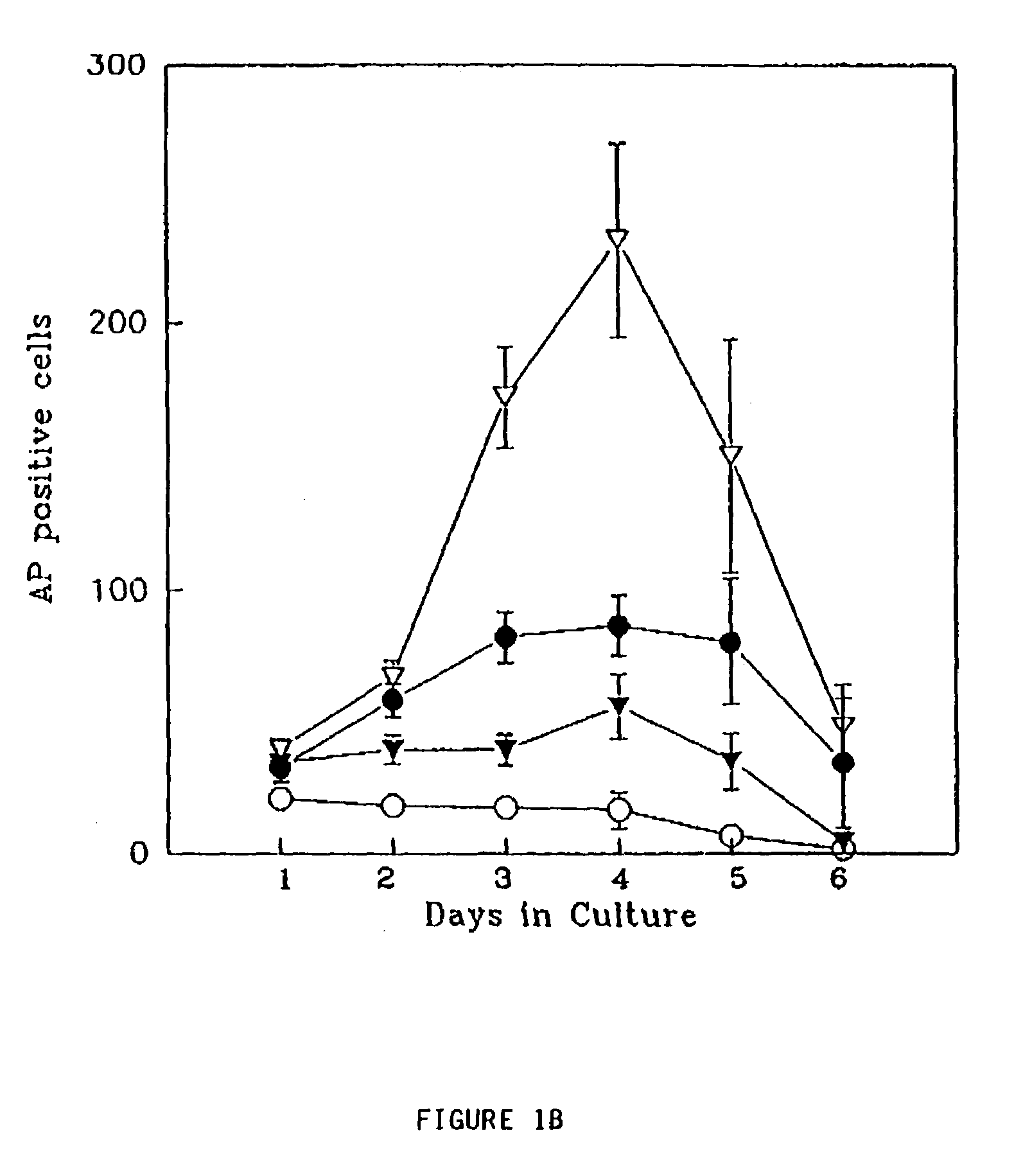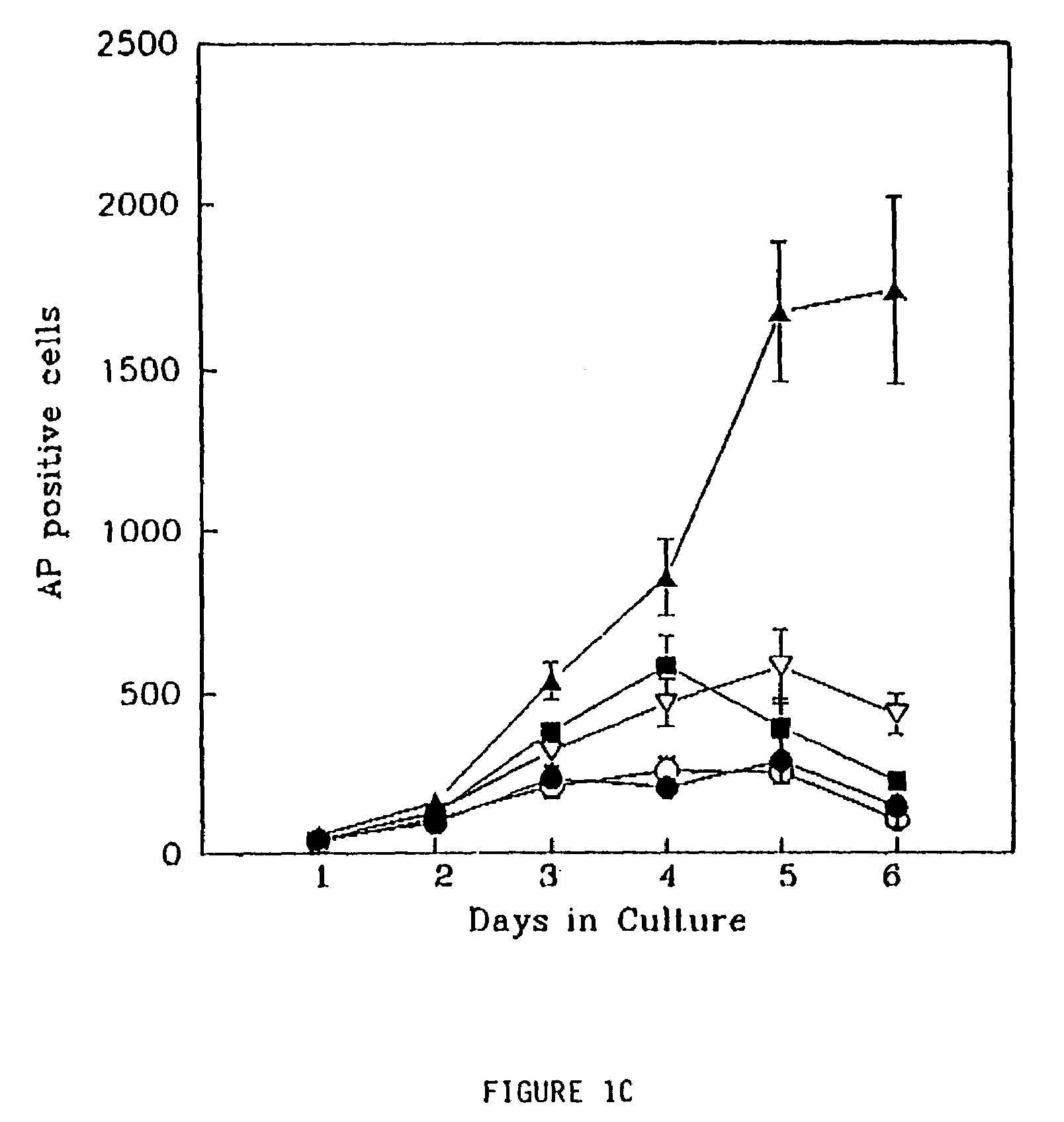Pluripotential embryonic stem cells and methods of making same
a technology of embryonic stem cells and embryos, applied in the field of pluripotent embryonic stem cells, can solve the problems of inconvenient differentiation of embryoid bodies, insufficient evidence presented in the evans application for the differentiation of cow and pig putative es cell lines into differentiated cell types in monolayer culture, tumors,
- Summary
- Abstract
- Description
- Claims
- Application Information
AI Technical Summary
Benefits of technology
Problems solved by technology
Method used
Image
Examples
examples
[0066]All the cell types and other materials listed below can be obtained through available sources and / or through routine methods.
Materials and Methods
Feeder Cells
[0067]The Sl / Sl4 cell line, derived from a homozygous null Sl / Sl mouse embryo, and its derivative, Sl4-m220, which stably expresses only membrane bound murine SF lacking exon 6 encoding the proteolytic cleavage site, were obtained from Dr. David Williams (Howard Hughes Medical Institute, Indiana University Medical School). Other cell lines which produce adequate SF can be substituted for Sl / Sl4, for example mouse or human embryo fibroblasts or cell lines or somatic cell lines from gonads or genital ridges. Combinations of feeder cells can also be utilized. They were maintained in DMEM with 10% calf serum and 50 ug / ml gentamicin. For making feeder layers they were irradiated (500 rads) and plated at a density of 2×105 per well of 24-well plates (Falcon) in the same medium, 24 hrs before use. Wells were pre-treated with 1% ...
PUM
 Login to View More
Login to View More Abstract
Description
Claims
Application Information
 Login to View More
Login to View More - R&D
- Intellectual Property
- Life Sciences
- Materials
- Tech Scout
- Unparalleled Data Quality
- Higher Quality Content
- 60% Fewer Hallucinations
Browse by: Latest US Patents, China's latest patents, Technical Efficacy Thesaurus, Application Domain, Technology Topic, Popular Technical Reports.
© 2025 PatSnap. All rights reserved.Legal|Privacy policy|Modern Slavery Act Transparency Statement|Sitemap|About US| Contact US: help@patsnap.com



